Scuba Diving Tips For First Time Divers
All new divers face challenges when they start their diving careers. It is normal. However, since I have been through it and want to help you shorten your learning curve, I want to share these scuba diving tips for first time divers - along with keys for overcoming those challenges. This way you should be able to improve your diving and dive experience in a shorter amount of time.
In this video I share tips with you relating to buoyancy control, air consumption, equalization and boat diving. If you have any issues in these areas be sure to watch so you can gain more confidence before your very next dive.
I hope you enjoy the video! Feel free to leave any comments below (at the bottom of the page).
I hope these tips help you with your diving on your very next dive!
Transcript: Scuba Diving Tips For First Time Divers
If you're a new diver you can sometimes feel intimidated or anxious before you go diving. Because you think everyone else has 10,000 dives under their weightbelt and you are the only quote unquote newbie on the dive boat. In this video I am going to share some tips with you so you can feel more confident and more comfortable the next time you go diving. And in this video I am actually going to go around to the other side of the computer and share my tips with you there.
Now as I discussed, when we're face to face earlier, there are some challenges that all new divers are going to face. We're going to go over some of those key challenges. And more importantly, I want to give you some keys to those challenges so you can have a nice safe stress-free dive. And here we go with challenge number one, and it's a big one.
This is probably the biggest challenge that any new diver's going to face is trying to get control of their buoyancy and to achieve that state of neutral buoyancy. And if it's one thing that I get asked about a lot on my site, it is buoyancy control because as you know, if you're not neutrally buoyant, you're going to be bobbing up and down like this yo-yo.
You're going to be constantly putting air in your BC, going up, taking air out, going down. You're going to be going up and down trying to achieve that neutral buoyancy. And as you do that, trying to achieve that neutral buoyancy, you're going to see your air go down quickly. Because you're going to be using that air, inflating, your BC, taking out, putting more in, so you're going to be going up and down and going through that air quickly, which of course is not what we want.
We want to do everything we can to float steadily along while we're diving and to conserve our air, which leads us to the first key to meeting that challenge of achieving neutral buoyancy. Now, a key here is that most new divers are overweighted. Now, as you begin your training or do your initial dives after completing training, you're still probably going to be a bit nervous as all new divers are.
It's very understandable, but since you are a little bit nervous and anxious, you're probably going to be breathing more breathing more heavily. You're going to be going up and down the water column. So as a result, new divers are sometimes giving more weight in order to keep them on the bottom during the training dives.
Now that's fine as far as it goes. However, the problem does arise that if the amount of weight isn't adjusted, once you are more comfortable as you dive, you're going to be overweighted. because once you are a little bit more comfortable in the water, you tend to need less weight. And I could tell you that it's definitely been my experience.
So earlier in my dive career say I went on a dive trip after not having gone diving for a few months. Now on that first initial dive of the trip, say at my last trip, maybe I ended the week with say like eight pounds that made me neutrally buoyant.
So on the first dive of that next trip, after a few months off, I would basically put on another one to two pounds, because I knew at that point I was going to be a little anxious because I haven't dove for a while. And you are always a little anxious after you haven't gone the water for a few months because you know, you have to get everything back together. Have to remember everything. You gotta get comfortable in the water again.
So for that first dive I would put on an extra pound or two, but then after a couple dives, I would take that weight off and I would be neutrally buoyant. So on the first dive I'm neutrally buoyant with that extra two pounds, but say midweek or whenever I felt comfortable, again, usually just after one or two dives I'd still be neutrally buoyant with two pounds less.
So as you get more comfortable in the water, especially as new divers, you're going to be able to use less weight. Of course, the key here is that you would probably have to make the adjustments yourself. Because once you're finished with your open water certification dives, you are no longer going to have an instructor to watch over you, ask questions, you know, check your buoyancy.
So, if you are carrying that extra four pounds or whatever the case may be, it's going to be that much harder to get neutrally buoyant. Because you're going to have to compensate for that extra weight by adding air in your BC since the extra weight has to be offset by extra buoyancy. So you just have to remember that you're going to have to make those adjustments yourself, cause since you no longer have an instructor with you. And a couple keys to see if you are overweighted is if you're constantly having to kick yourself off the bottom or having to put your air in the BC, once you're at your maximum depth. Chances are, if you are doing these two things at your maximum depth for the dive, you're probably going to be overweighted.
So you want to maybe try and make adjustments on that next dive or maybe the next day, whenever you get the chance. But when you do make those adjustments, you want to make the adjustments in small increments. You want to take off one pound, two pounds at the most, at a time you don't want to take off four or five pounds and say, okay, that's good because then you're going to be, you know, way underweighted most likely.
So make it small increments and you can change each day if you're still, you know, finding yourself overweighted, if you're still kicking yourself off the bottom, you know, in the dive and you're still maybe falling down in the water column on your safety stop. Take a pound or two off, maybe on your next dive or the next day.
And of course, that brings us to the million dollar question. What is the proper amount of weight for you? And of course the answer is it depends. I mean the same diver could be wearing different amount of weight. You know, it depends on what equipment you're going to be using, what accessories you're carrying, what type of wetsuit you're wearing, you know, the size tank, or there are a lot of variables that can affect the amount of weight that you're going to be carrying.
However, what you want to do is determine a beginning amount of weight based on your basic setup of what you usually dive with. And then you could adjust for the above factors if you have a different setup on another dive. Now, the most common and largest adjustment you're going to have to make for your weight is basically going to probably be your wetsuit.
In general, a new wetsuit has two to three pounds give or take of buoyancy for every millimeter of thickness. So if you're wearing a thin tropical suit, that could be less than two pounds of buoyancy. Whereas if you're wearing a thick, cold water suit, you could have closer to 20 pounds of buoyancy. So obviously it is a huge range and you're going to have to account for this, with your weight.
Now, normally I don't get that cold. Sometimes I wear a wetsuit, but not usually. And quite a few years ago, we're in The Bahamas and we weren't planning on diving. It was a short trip, but once we were down there, we decided to do a couple dives. We didn't bring any of our equipment. So I rented a shorty wetsuit and I wasn't sure what that should be as far as to compensate for the weight of that wetsuit.
So basically I just asked the dive master and he said, I should put on about an extra five pounds of weight to my normal weight, to compensate for the wetsuit that I was wearing. And I did do that. Now I did the first dive with the extra five pounds on, and I felt I was a little bit overweighted, but not too bad, but then the next dive I took off an extra pound. So I had four pounds over what my normal weight was for the shorty wetsuit. And I felt fine during the second dive. I didn't have to add too much air during the dive and I was fine at the safety stop. So I just made a note of it, you know, for the next time I wear a shorty.
So I would know what my beginning weight would be. Now the point of the story really is to ask the dive master, ask and adjust accordingly. Don't be afraid to ask the dive team or the dive master whoever you are with for the recommendations. I mean, that's what they're there for. And they're glad to help.
So if you're unsure how much weight you'll need, or even how much weight you should start out with. Say, you know, you didn't write it down, you haven't been diving in a while, just ask for their opinion. I mean, they're professionals and that's what they're trained to do so you might as well take advantage of it after all you are paying them too.
So even if you feel a little bit embarrassed asking, because it seems like everyone else knows what they're doing, don't worry. You know, chances are some of the divers are asking the same questions and some are in the same boat as you, but even if you're the only one asking questions, don't worry about it it's just going tomake you a better diver.
It's better to think that this dive master has you going in at 13 pounds rather than, you know, you going in at your 15 pounds or whatever it may be, and constantly having to add air to your BC. So if you don't have a good place to start, all you have to do is just ask and that'll give you a good starting point.
I mean, because these dive masters have probably seen hundreds of divers. And so they're used to making recommendations. You know if you ever got on a dive boat, sometimes you'll just get up there to the, the dive master who'll look at you, you know, as they're giving out weights and say, okay, you need probably eight pounds of weight and you need about 15 pounds a weight, whatever it may be.
But just the point is that they're used to it. So just go up there and ask them if you're not sure what you should really start out with. Now, ideally new divers should do frequent buoyancy checks to make sure they're carrying the correct amount of weight.
Now at a buoyancy check, you know, as a starting point, you usually begin with the full tank of air and a fully deflated BC. And popular theory has it that when you have these two conditions, the full tank of air and no air in the BC, and you're at the surface, you should be floating about eye level, maybe a little below eye level in the water you know while you're holding a normal breath.
So if you sink when you exhale and rise when you inhale, you're said to be neutrally buoyant. At least this is the way I was taught during my certification class. However, I take some issue with the above view. I mean, you're indeed neutrally buoyant in this scenario, but that's with the full tank of air.
The other view and that is the one that actually I go with now is that you should be neutrally buoyant at 15 feet of water. You know, that's where you're going to be doing your safety stop, you know, 15 to 20 feet with the near empty tank of air, say about 500 to a thousand PSI left in your tank. Because to think about, you know, if you're neutrally buoyant at the surface with the full tank of air, you're going to be positively buoyant when you do your safety stop.
Uh that's because as you're going to dive, you're going to use up that air and the tank is going to become positively buoyant, you know, the less air it has. So with the positive buoyancy from the tank, since you used up most of the air, if you are neutrally buoyant at the surface with the full tank, you're going to be underweighted at your safety stop and you're going to have trouble maintaining your depth at that safety stop, which obviously is not what we want.
I'll be the Guinea pig here because when I first started diving, that's how I, as I said, that's how I was taught. You're going to be neutrally buoyant, I had a full tank of air. First dives I'm doing, I couldn't understand why I was having so much trouble staying at the safety stop. You know, I had no trouble, you know, while I'm deep during the dive, but I did have problems staying at the 15 feet. So if there was a line I would hold onto that, you know, I'd grab it to make sure I didn't float up above 15 feet, or I held onto my husband, lucky him. I'm sure he loved that.
I would constantly kick down or, you know, move around to stay at that 15 feet. And I'm sure you've probably seen people or maybe you do this yourself and I can remember doing it very clearly on lots of dives. And then I finally came to realize what the problem was. I was neutrally buoyant at the surface, but I was positively buoyant with that, that empty tank of air at the safety stop.
So what I did obviously then I added some extra weight to compensate for the positive buoyancy of the tank and then after that, I was able to maintain my depth. And I'll tell you, it makes such a big difference. It's so much more fun and much less stressful to be able to stay at that 15 feet at your safety stop. So on your next dive, if you're having problems, getting neutrally buoyant, try and do a buoyancy check.
And it's a good idea to check, do a buoyancy check every once in a while anyway. So what you want to do for your buoyancy check, I would recommend you go at the surface with your normal amount of weight, and you want to do it with a near empty tank about the 500 to a thousand PSI. So maybe you can do it after you surface from your dive so that way you're going to have a partway empty tank. Just take a normal breath. You're going to have no air in your BC. And then if you start to sink, hopefully slowly, you're going to be slightly negative buoyant. And if you're floating at eye level, basically you're pretty much neutrally buoyant, which is great. But if you're a little bit higher in the water, then you're positively buoyant.
So then you can just adjust the weights that you needed. Remember just to do it in small increments, do a pound or two at a time and as we said, your ultimate goal here is to be neutrally buoyant at your 15 foot safety stop. So now you're going to have your approximate amount of weight and you can add or subtract in small increments as you see fit if you're not neutrally buoyant. So at your safety stop and you have no air in your BC and you're not moving around. If you start ascending, that means you're going to be underweighted. And conversely, if you start sinking at the safety stop and you still have no air in your BC, it means you're overweighted.
So just make adjustments probably in one pound increments on your next dive. And pretty soon you should be able to get that weight that will make you neutrally buoyant. So the point here, as we said in the beginning is to make those adjustments on yourself. Be cognizant of what's happening on your safety stop to see what you have to do to adjust and try and do that buoyancy check to see if you are positively or negatively buoyant. And of course another major challenge for all new divers and even lots of not new divers is, is air consumption. Before we even get onto that, we just tie it back into the first challenge of being overweighted.
Once you get neutrally buoyant, you're going to be using less air, which is an added benefit because you're not going to be putting that air in the BC, letting it out, putting the air in the BC. So if you do get yourself neutrally buoyant, this is going tohelp with your air consumption. And we all want to decrease that air consumption.
And why? Because of course, the faster we go through that air, the less bottom time we're going to have. And you never really want to have to cut that dive short, been there, done that. And of course that means if you have to cut your dive short, your buddy is going to have to surface early with you, at least in most guided situations. And this is probably what your poor buddy's going to feel like inside, even though he probably won't let you know it, you know, dive buddies are usually good that way.
And of course, you're going to miss some sites underwater, possibly. If you're cutting that dive short, just as you go up to the boat, you know, that's when that manta rays going to go by. Then of course you can always be stuck on that boat if you're up there early and you have to wait for other divers to come in, it's no fun sitting up there on that hot boat waiting for other divers to surface. And of course you can always be worried about that newbie pin, the dreaded newbie pin. I know I was always worried about being tagged as a newbie when I first started diving, but I'll say here and now don't be embarrassed and don't worry about it.
Everyone was a new diver once and they were in your shoes. So even if you do have to cut your dive short, don't stress out about it. I know it's easier said than done, but obviously going to want to work on it. Don't be concerned about the other divers or what they think we're going to try and improve your air consumption here.
And that first key here that we're going to discuss for decreasing your air consumption is to stop moving and streamline. I'm going to repeat that. Stop moving and streamline. Okay. I know it's two keys, but we're going to count it as one. So in order to do that, I want you to think of your body in blocks. Basically approach it as blocks.
When you're thinking of what you can do to improve your air consumption you want to think about the head the torso and the leg. And for this key here today, we're going tothink about the main part of our body. We're going to talk about the torso, because each of these blocks of your body have specific steps you can take to decrease your air consumption. Okay. We're going to start with a little Zen here because the most important thing you want to do with your torso is nothing. Stop moving. because moving around uses energy and you have to breathe to feed that energy. So the more you're moving around underwater, the more air you're going to use. So you want to use a minimum amount of movement to get the maximum air consumption. Again, you want to use a minimum amount of movement to get the maximum amount of air consumption.
So rather than use your hands, you can just move forward with your fins. You know, they should be propelling you rather than your hands. And if, basically, if you're on a drift dive, which I absolutely love, usually you don't even need to use your fins. So you're going to be even, should be able to use even less air on that dive.
You can just move along with the current and not have any movement at all because less movement equals less air used. So you want to concentrate and be aware of your movements at all times, you want to keep your hands at your side or held in front of you or whatever position you're comfortable with. You don't need them to swim so for the most part, you really shouldn't be using them during your dive.
And obviously this is where buoyancy control is going to help you. And it's going to help you conserve air also, as we discussed before. New divers, you know, you're going tosee many of them use their hands to adjust their position in the water column or stay horizontal and it's perfectly normal, but it's just that you want to concentrate on keeping them still. Obviously concentrate on your buoyancy control or think about what your body is doing as you are going on your next dive.
And just remember to try and have the minimum amount of movement because less movement it's going to equal less air used. And you're going to also want to streamline everything. While this might not seem like a big deal, streamlining all your gear and accessories is going to help you improve your efficiency underwater. And the less resistance you have, the better. Because the more resistance you have, it's going to be the more air you're going to be consuming.
So you want to make sure nothing is dangling from your gear set up and it's also going tohelp it protect it from going in the sand or hitting coral. And you want to get rid of all those accessories you don't use and have whatever you do use clipped and close to your body. So you want to make sure the octopus is in a holder or in a BC pocket maybe if there's not a holder available. You want to clip your gauges to your BC so they don't dangle.
And you want to put that dive light, the slate, whatever, in your pockets, or have them clipped closely to your body because the less drag the better. Okay. So it's just a little fun cartoon here. But you get the idea - if you aren't using that piece of gear, you know, don't bring it with you. Especially as a newer dive, you really want to start simple so you have less to concentrate on less to worry about. You just want to bring the basic stuff with you. Maybe you want a dive light if you're going to have some overhangs you can look into to bring out the colors. But the less you have as a new diver, the less you have to concentrate on the better it's going to be.
That way you can concentrate more on your movements and your buoyancy control. One way you might want to think about as you're underwater, think of be the torpedo. Be the torpedo, everything is sleek, trim, straight, horizontal. There's nothing hanging off of it. So maybe when you're under water next time think of that. Think of that torpedo. It may just give you that little jog in your memory to get yourself nice and streamlined to help you with that air consumption. You want to make yourself look like that torpedo. So just concentrate on moving along and you'll probably get to that torpedo position sooner than you think.
So that brings us to our next challenge. And that is equalizing. Now many divers have problems equalizing. They have a little bit difficulty getting down, because once they do go down, they start feeling pain and discomfort. Like this poor guy here, and they can also do damage to their eardrums. Actually I've read some articles that claim up to 80% of new divers show, some signs of damage to the eardrum.
And this occurs during their first dives. Now, luckily the damage usually isn't that extensive. It's actually pretty, fairly minor and repairs itself over time. However you do want to do all you can do to protect your ears and make sure you don't do any damage. Certainly don't want to do any long term damage.
Now, key to this is to equalize very early. And when I say early, I mean early, you want to start before you even board the boat. Now, before you board the boat, you want to try seeing if you can hear that pop in your ears. Because once you hear that pop and I'm sure you probably know what I'm talking about, that means your eustation tubes are open, which is what's going to help you equalize as you descend. So if you do have problems equalizing on your dives, you might want to start several hours before you even dive. Begin gently equalizing your ears every few minutes or every half hour or so. And you're going to see if your eustation tubes are open, but just start doing that before you even get to the boat.
And if you haven't started earlier, say you forgot to do it. It's still not too late. Start your equalization on the surface. So whatever maneuver you're doing, you know, say you're doing the Valsalva gently blow through your nose while you're waiting to start your descent, before you even go under the water.
This basically pre pressurizes the ear a little bit and makes equalization easier upon descent. Gives you that little extra air that can make a difference between an easy descent or a more difficult one. Now, some say this doesn't work, but of course, experiment and see what works for you. because what works for one person may not work for another person.
So just started if you're having problems equalizing it's not going to hurt you. So equalize at the surface and pre pressurize. Now I'll tell you a story here too. When we were on a liverboard in Thailand a diver joined us for the day that was different. You know, they bring out a diver on a high speed boat to come join us on the liverboard for the day.
He just did a couple dives and then left. I don't know it was it a little strange. But anyway, after the first dive we were talking to this diver and he had said that he had problems equalizing. I saw him, you know, it took him quite a while to get down. So I was talking him in between dives and I was telling him this little trick.
I go, well, start before you even descend, even start now, you know. He was doing the Valsava maneuve, so I'm like start blowing now and do it every so often and then definitely do it again before you descend. And actually it really did help him. He came up to me after that second dive and before he left for the day and he came over to thank me. Said it really helped and he never got down that easily before. So you never know what's going towork for you. So give it a try.
And of course, as you learned in the certification class, once you do start descending, just keep on equalizing early and often and equalize the whole way down. So you want to equalize before you get down the boat, you want to equalize at the surface and you want to equalize the whole way down as you make your descent.
And that should really help you get down easier if you are having problems. And I would say that's probably the most important step you can take to descending without ear problems. And that brings us to the next challenge for new divers. And that is boat diving. Now boat diving is a source of stress for a lot of new divers.
Me included. I remember being stressed out before my first few boat dives. Because I wasn't familiar with the procedures and there can be a lot of activity on the dive boat prior to leaving to the dock. And even when you're out there and it seems like everyone knows exactly what they're doing except for you.
So those first few times you're on the dive boat it can be a bit intimidating. So I actually want to give you two tips here for boat diving. The one it's going tohelp you feel better and more relaxed and have a much less stressful dive. And the other one it's going tohelp you score points with the other divers on the boat. And who doesn't want that?
So the first early we're going todiscuss here is early to the dive shop. If the dive shop says to be there at eight o'clock sharp, please try and be there at eight o'clock sharp. You are going to have to fill out forms. You probably have to show yout certification cards. You're going to have to get fitted for equipment if you're rented, et cetera, et cetera.
So if you're late, you know, the boat's going to be held up and you're going tohold up other divers and you really don't want to do that. You don't really don't want to start out inconveniencing other people. You just really do want to be considerate dive. But also it's more for you than the other divers because being early or on time is going togive you ample time to get everything ready to get your gear, get situated, get to the dive boat.
And the earlier you are the more relaxed you're going to be and the less stressed you're going to be. So you really want to get there early and you want to be one of these people waiting here. Actually, that's my husband, Tim, my girlfriend May, waiting to get out in the dive boat, get everything together. You take a breather and just hang out before you get on the boat.
And the second early we want to discuss is your gear. You want to assemble your gear early. Of course, this depends on the dive boat. Some dive boats don't want you on the boat early. Don't want you to touch your gear until you're out. So it all depends on whatever the dive boat procedures are. But if at all possible I would try and assemble gear early.
I like to have my gear assembled at the dock so that I could just relax on that, the trip out to the dive site. And that way also, if the water is rough, you don't have to contend with a rocking boat, trying to get all your stuff together. And another advantage of assembling your gear early is you're going to know if something's wrong.
You know, if you have a low fill, if you're missing an O-ring or, you know, you hear a hiss coming out, you know, there's, something's going to be wrong while you're at the dock and you can take care of it. Now, sometimes dive crew's going toassemble your gear, which is fine. But I would also recommend if the dive crew does assemble your gear, you want to check it, you know, you never know, obviously know what they're doing, but you also want to know what they're doing. You want to know that everything is together and it's a good review for you too. So either way, if they do assemble it, check it yourself. And if you can assemble it, assemble it early, as long as a dive boat procedures allow that.
And the next early I want to talk about is suiting up. You notice a theme here the early, early, early. Obviously it depends on the length of the boat trip. If the dive site is five minutes out, you might want to suit up at the dock. But if you're in the open boat, obviously, and it's hot weather, you might want to hold off putting on that wet suit until you get closer to the site, especially if you have a long boat ride.
And the dive master is usually going to give you a signal to start getting dressed as you approach the dive site. You can ask though before you even leave the dock about how long of a ride is it? You know, ask the dive master or the boat captain. Because that way you have some idea of what you can do.. And you can just relax, say it's a 45 minute boat ride. You know, you can relax for at least 30 minutes. Don't have to worry about anything. I always ask if they don't say, you know, before we get how long it is, I always ask how much it is. So I know I can just sit and hang out until we get close to the dive site.
I know about what time then to, to suit up because then once you are suited up you're going to have your gear ready. You're suited up - all you have to do is sit down, put your gear on. You're going to have plenty of time to think about the dive, relax, get your breath and get ready to hit that water because you don't want to be rushing about.
And the last thing you want to do is hit that water after you're rushing about. You're probably going tomake a mistake with something if you are in a rushed state of panic and you're not going to be ready to descend with the group. So just do everything early. It's not that difficult and it's going to make a big difference on your dive.
And another tip for boat diving so you can score points with those other divers and actually make your life easier is to be as compact as possible. You don't want to have all your gear spread out all over the benches, because you want to take up as small an area as you can, and it's going to help protect your gear and it's going to be out of the way of other divers and they will definitely appreciate it.
Because a lot of times you get on these dive boats, it can be very crowded and you're just lined up one by one. So you want to try and keep everything as compact as possible. So if you have your gear all setup, one thing you can also do to even take up less space is to make sure that BC is deflated, put your gauges inside the BC and then Velcro it.
So that's going to be all stuck in nice and tight, and it's not going to be taking up any room or get in the room of other divers. And it's also going toprotect your gauges. And other divers are going to appreciate that. And to stay as compact as possible you're going towant to put your gear in a bag or organize if you don't have one, but I do highly recommend getting a gear bag. Not one of those big, huge things you don't want to take it on the dive boat.
If you took it on the plane you don't want to take that same type of luggage that you take on a plane if you have a big gear bag. I would recommend just like a mesh bag and that can hold most of your dive gear. And that way you can just put it all in there, keep it organized and keep it all in one spot. And it doesn't take up much room and it keeps everything out of the way.
Personally, I use a blue mesh bag. Been using it for years and it doesn't have to be expensive. It's just a cheap little thing. Just has one zipper pocket at the end, but it holds everything except our BC I think actually wear our BC over the shoulder when we go into the dive boat, but that's no big deal. But it holds everything else and it doesn't take up any room and it's a nice cheap bag and we've gotten many, many years of use out of it so far.
And once you do get on, I want to just give you the hint to store that gear and the weights under your seat. Usually you get on a dive boat they're going to assign you a spot. They're going to lead you over to a tank and you want to put that stuff under the seat if you're not assembling it before you leave. And especially anything like weights or your tanks, you going to make sure those tanks are bungied in. And don't put the weights on the seat because obviously they could fall off and hit someone in the toe and you're going to have one very unhappy diver. No one wants that.
If you want more tips like these, just click here and check out ConfidentNewDiver.com, my complete video training course for beginning divers.
End of Transcript for scuba diving tips for first time
Want to stay down longer and improve your buoyancy control and other diving skills? Our free report "Increase Your Bottom Time" along with our practical, weekly actionable tips will have you looking like a seasoned diver in no time. So come join us and see improvement on your very next dive!
(Click on the photo to join us now!)
What's New
-
Unofficially Summer
May 25, 24 07:19 AM
Well it is finally here. Memorial Day weekend and the unofficial start of summer! Wishing everyone a happy and healthy holiday weekend. Hopefully the weather cooperates wherever you are and you will b… -
Happy New Year
Jan 01, 24 06:00 AM
Happy New Year everyone! I hope everyone is well and had a fun New Years Eve! May your new year be filled with lots of wonderful dives. All the best to you and yours in 2024! Let the dives begin. -
Happy Holidays
Dec 14, 23 05:05 AM
I hope everyone is enjoying the holiday season! I am always amazed at how fast time flies and another year is just around the corner. I wanted to pop in and say hi to everyone. I am doing some full ti… -
3 Common Scuba Diving Mistakes New Divers Make
Feb 23, 23 02:18 PM
In this video, I share 3 common scuba diving mistakes beginner divers make. Learn how to correct these for a better - and safer - dive. -
Scuba Diving Tipping Etiquette: How Much And When To Tip Scuba Crew
Feb 06, 23 03:34 PM
Not sure of scuba diving tipping etiquette? In this video I share who to tip, when to tip, how much to tip, tipping on liveaboards, tipping an instructor & more
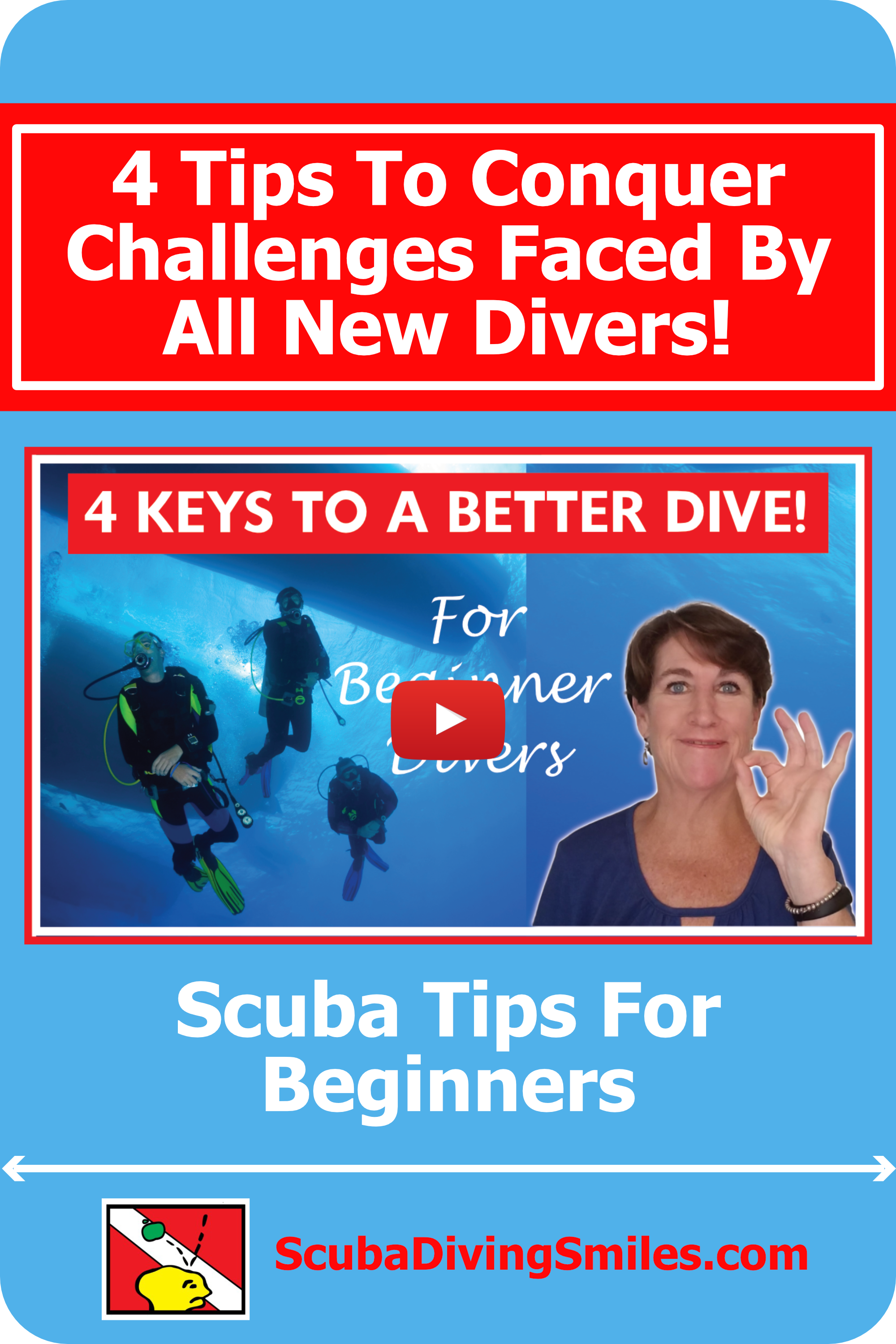
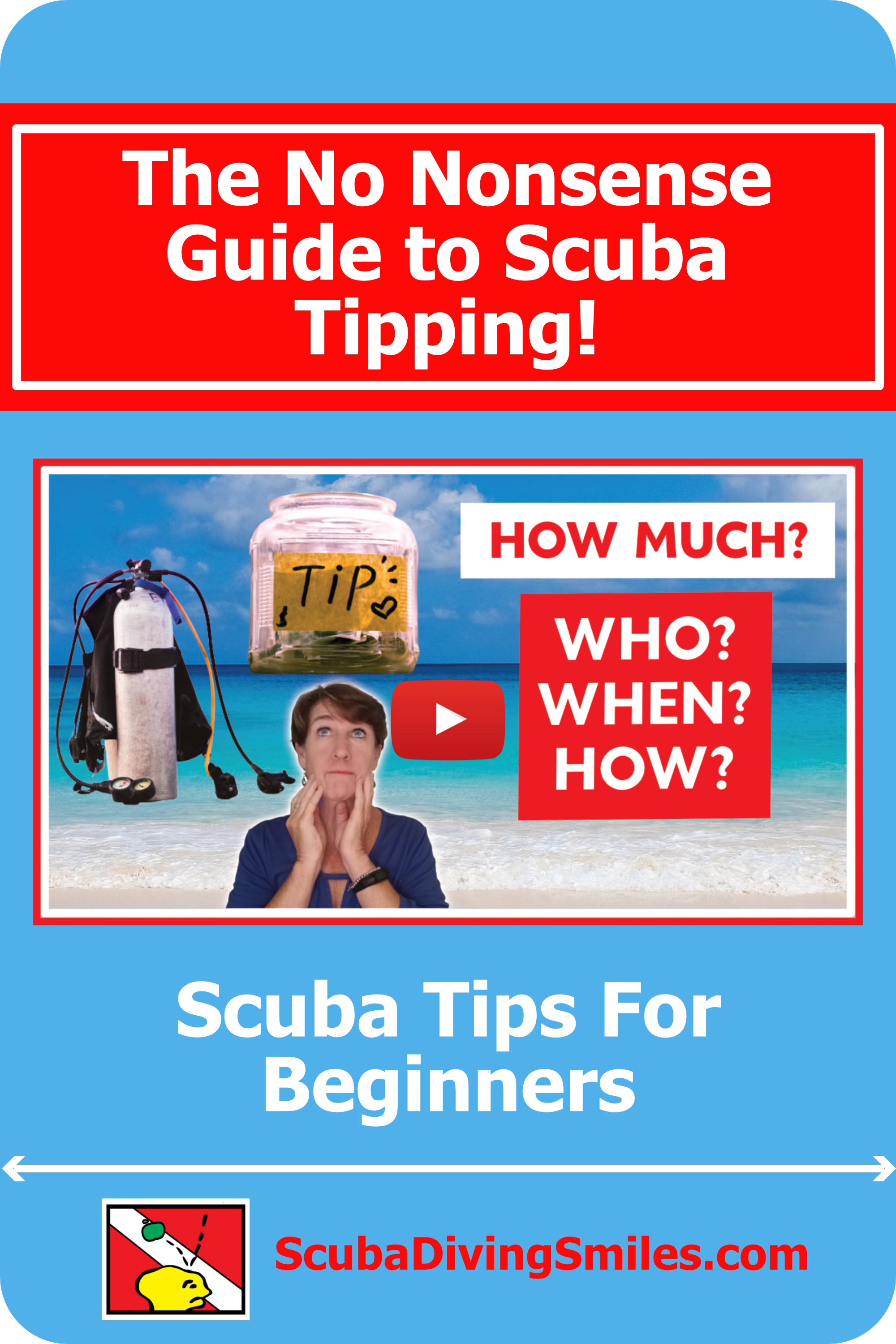

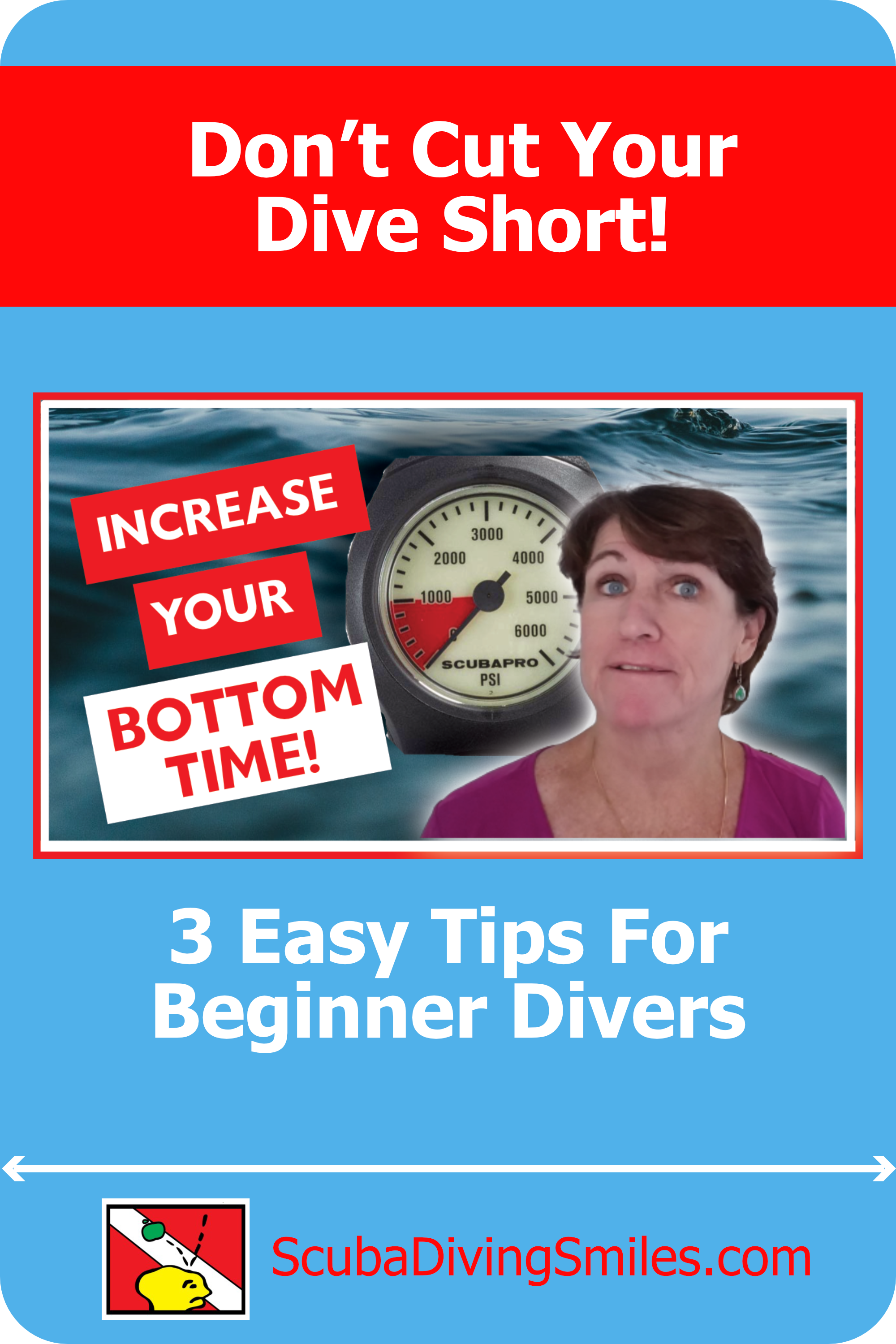
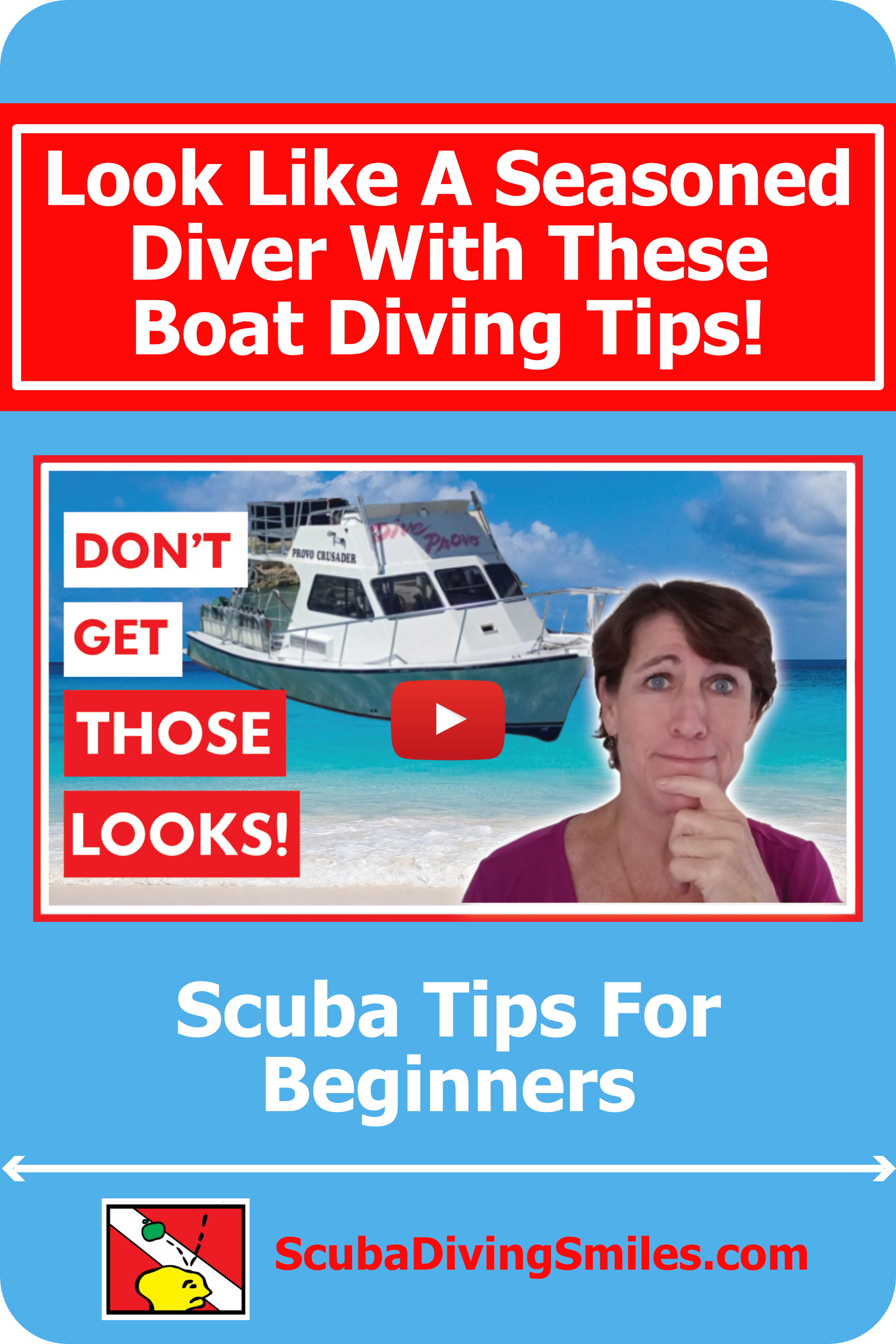
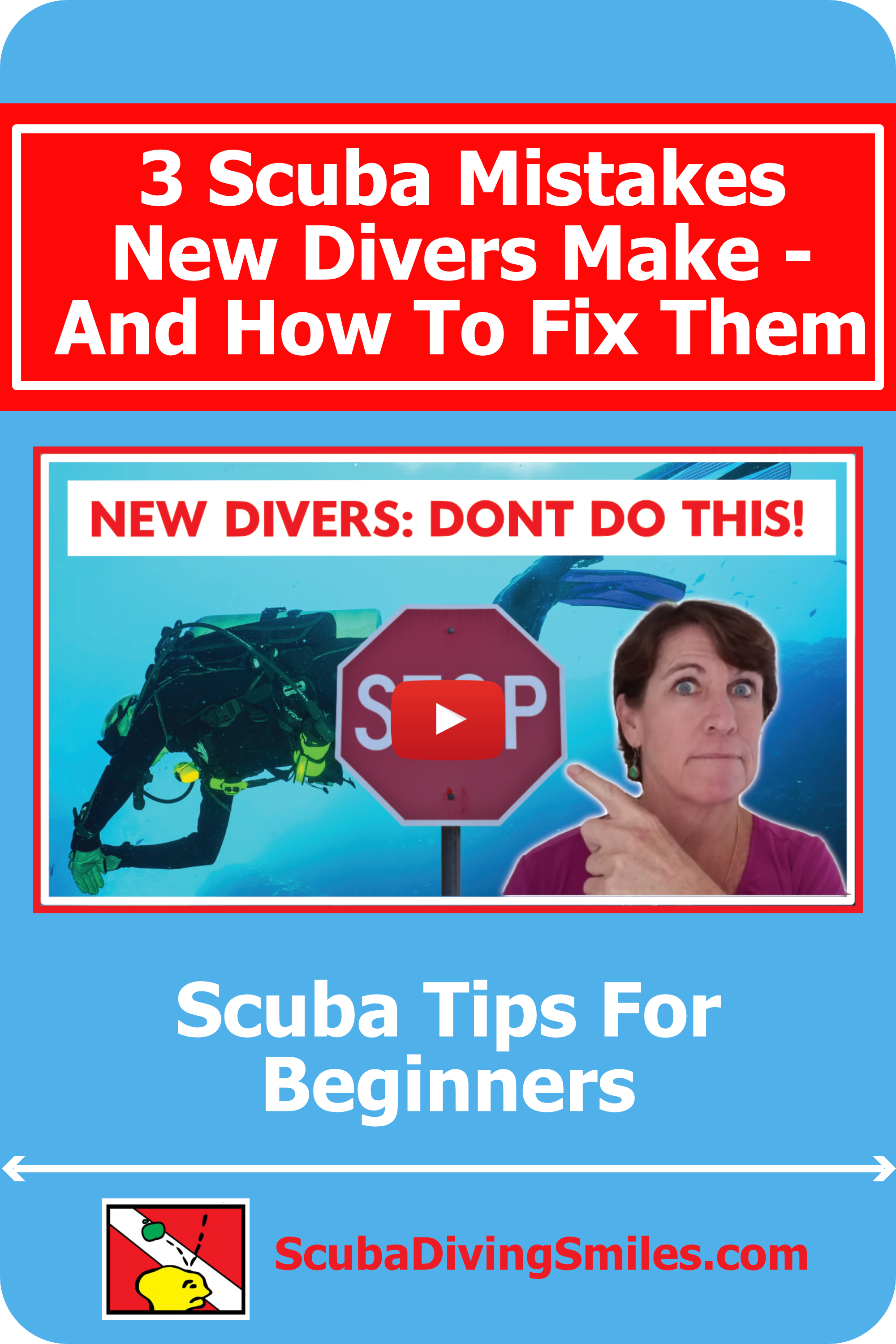
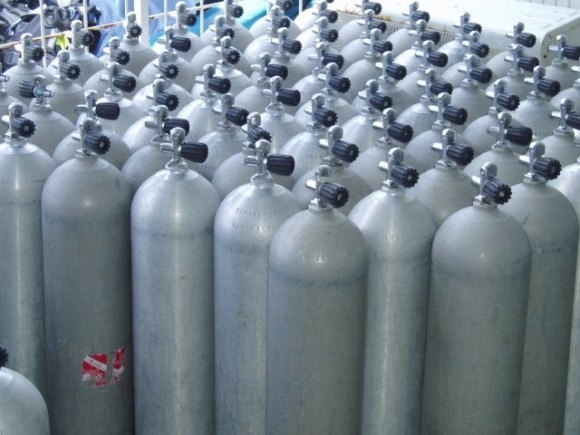
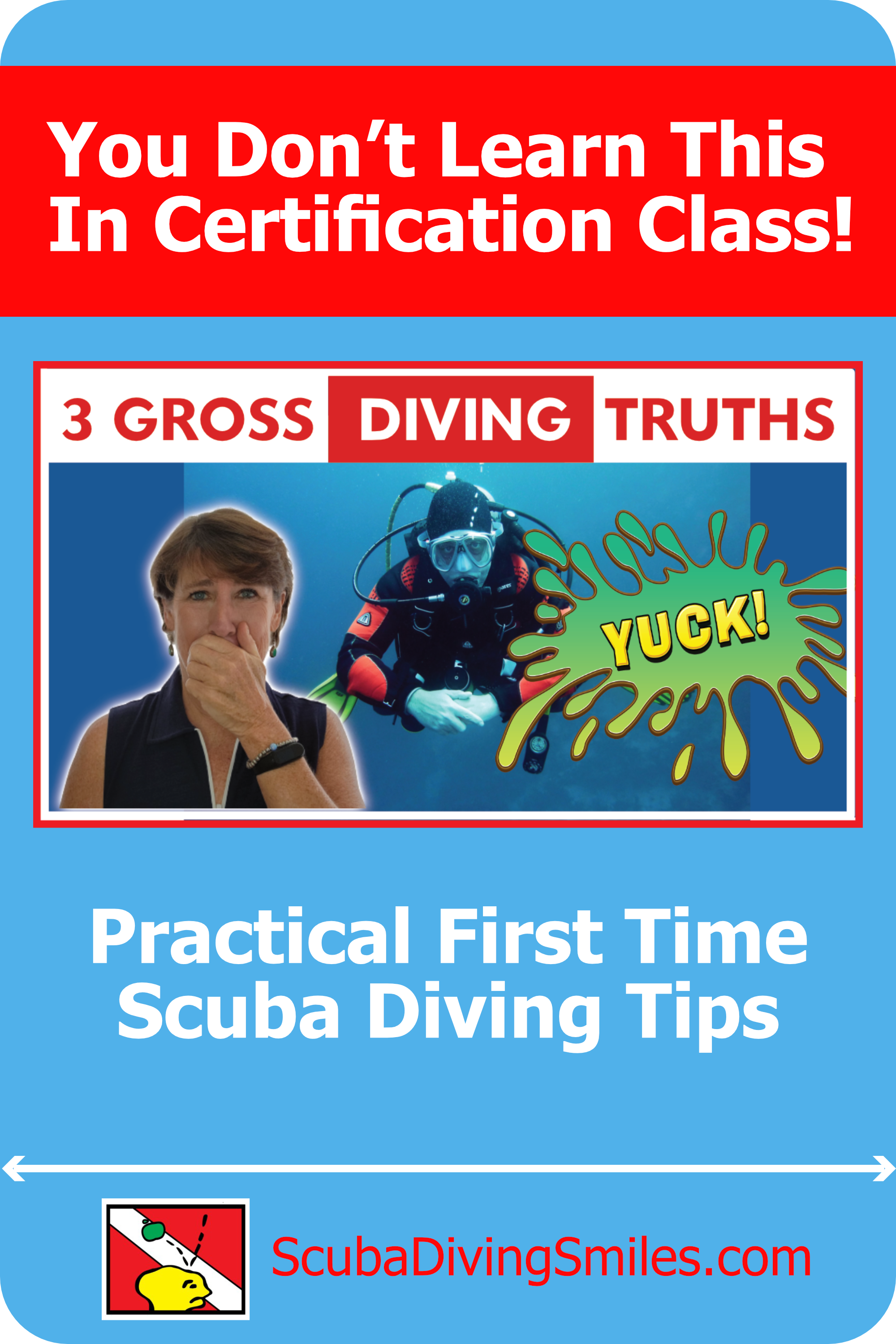

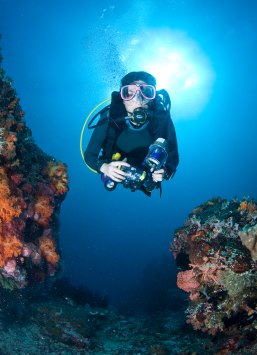
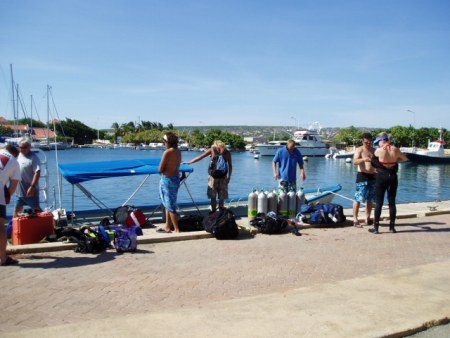


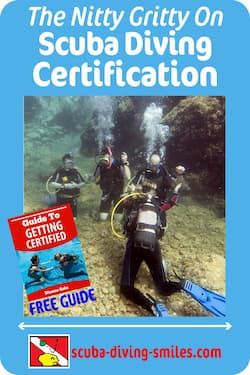
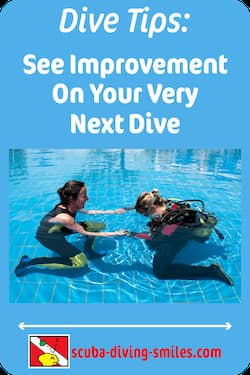
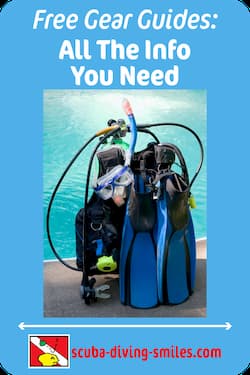

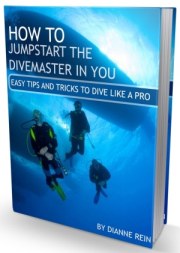
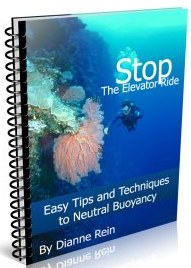
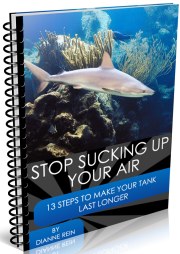
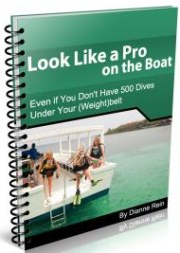
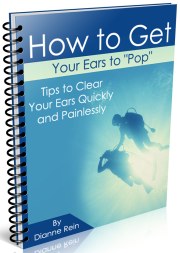
New! Comments
Have your say about what you just read! Leave me a comment in the box below.